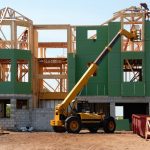Surety Bond Professionals is a family owned and operated bonding agency with over 30 years of experience. With access to a broad range of surety markets, our expert agents are ready to assist with all of your construction bond needs.
The Demand for U.S. Energy Independence
The Solar Energy Manufacturing for America Coalition (SEMA), a group of top U.S. solar companies, was formed in early 2021 in recognition of the growing demand for renewable energy. A key aspect of SEMA’s mission was, and remains, to lobby and advocate for a domestic solar energy supply chain and the creation of incentives for domestic solar panel manufacturing. (In 2022, less than 20% of the solar panels installed in the United States were made in the U.S.) A stable domestic supply chain is essential to reducing or eliminating our reliance on China for key materials (particularly polysilicon and glass), components, and finished solar panels. SEMA’s inputs helped shape the clean energy provisions in the Inflation Reduction Act (IRA), signed into law on August 16, 2022, by President Biden.
The White House has described the IRA as the most significant action Congress has taken on clean energy and climate change in the nation’s history. It includes substantial tax credits and incentives to increase clean energy production in the U.S. It is estimated that over the next 10 years, the IRA will lead to 69% more solar deployment (more than five times what existed in 2022) than would be the case without the IRA.
The Challenge
Perhaps the greatest impediment to meeting U.S. clean energy production goals has been its reliance on a global supply chain that has been constrained in recent years by tariffs, labor issues, regional conflicts (Ukraine is a key source of aluminum and titanium), and the Covid-19 pandemic. With raw materials and components coming from many parts of the world, supply chain disruptions have been slowing the production of solar panels for use in solar energy production in this country. Even with the incentives the IRA offers, it appears that many companies are waiting to see improvements in the supply chain before announcing major investments in production facilities.
Qcell’s Solution
Hanwha Qcells, a solar manufacturer based in South Korea and a member of SEMA, believes that the answer lies in vertical integration and is investing $2.5 billion to in the state of Georgia to prove it. Qcells began operating in Dalton, Georgia in 2019, and is expanding its facility there to grow its capacity. Additionally, the company is building another solar manufacturing plant in Bartow County, Georgia where it will produce solar ingots, wafers, cells, and finished panels, making it, according to Qcells’ press release, the largest fully integrated solar manufacturing operation in the United States.
The most important raw material for solar panels is low-carbon polysilicon. Hanwha Corporation, parent company of Qcells, has made a substantial investment to become the largest shareholder of REC Silicon—a polysilicon producer. Based in Norway, REC Silicon will be manufacturing low-carbon polysilicon in their Moses Lake, Washington facility.
It is likely that other solar manufacturers will ramp up production once they see how Qcells and other industry leaders are benefiting from the IRA. As the supply of American-made solar panels increases, so will new installations.
Prepare to Meet a Growing Solar Construction Demand
Contractors who want to become involved in building solar power generating facilities should be establishing sufficient bonding capacity to take on larger solar projects. A number of different types of solar surety bonds may be required for permitting, construction, operation, and decommissioning of such facilities. Their purpose is to mitigate the risk to project owners—government entities and private owners alike. Different solar bonds may be required at different points in the life cycle of a solar installation. The bonds required may include:
- Performance Bonds—These are a very common requirement. They protect the project owner against financial liability when a contractor defaults on the contract or otherwise fails to perform. For example, the bond would provide the funds to pay for another contractor to complete the work.
- Payment Bonds—These often are bundled with a performance bond. A payment bond guarantees that the contractor will pay suppliers or subcontractors according to the payment schedule included in the construction contract.
- Customs Bonds—These ensure compliance with regulations governing the import/export of solar panels and other solar system components, including the payment of taxes, duties, fines, or penalties.
- Maintenance Bonds—These obligate the contractor to provide ongoing operation or maintenance of a solar generating facility once it is up and running.
- Decommissioning Bonds—These bonds, also known as restoration bonds, guarantee the proper decommissioning of a solar generating facility and obligate the contractor to return the site to its original condition at the end of its useful life, which averages 25 years.
Call Us Today
Our surety bond professionals will help you grow your revenue by maximizing your surety capacity. Call us today!





